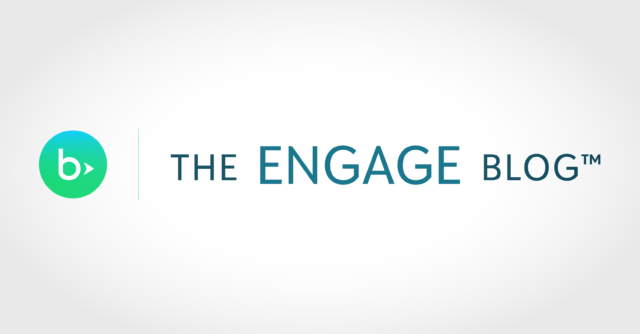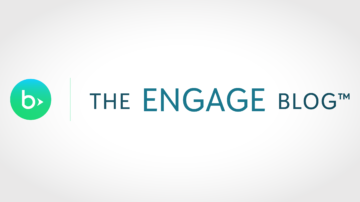Donor Journeys: From Discovery to Support

What Is a Donor Journey?
A donor journey is the complete path a supporter takes with your organization, from first discovering your cause to becoming a loyal advocate. It includes every interaction they have with your organization: emails, SMS, social media posts, donation forms, thank-you messages, events, and ongoing communications. Each touchpoint shapes how donors perceive your mission and could influence their decision to give again.
The multiple stages of the donor journey represent the ongoing process of building lasting relationships with supporters. Some donors make a one-time $25 gift and never return. Others progress from first-time annual fund givers to monthly donors, major contributors, volunteers, or board members. By understanding and designing this journey, organizations can create experiences that increase engagement, improve retention rates, and drive sustainable funding.
How Do Donor Journeys Impact Fundraising Efforts?
When you map how supporters interact at each stage of the donor journey, you can identify gaps in communication, remove friction from the giving process, and create targeted strategies that move supporters toward deeper engagement.
Organizations that actively manage donor journeys see measurable improvements in key fundraising metrics.
- Higher retention rates: Donors who receive consistent, relevant communication are more likely to give again
- Increased lifetime value: Strategic engagement moves supporters from one-time gifts to recurring donations
- Better resource allocation: Focus staff time and budget on the touchpoints that drive the most impact
- Improved donor satisfaction: Personalized experiences make supporters feel valued and connected to your mission
- Stronger acquisition outcomes: Understanding what converts prospects helps you replicate success across channels
- More predictable revenue: Clear patterns in donor behavior allow for better forecasting and planning
What Are the Donor Journey Stages?
Awareness
At the awareness stage, potential donors discover that your organization exists. They may find you through search engines, social media, word-of-mouth referrals, news coverage, or community events. Your goal here is visibility, not asking for donations. Focus on clear messaging about your mission and the problem you solve.
Example: Sarah searches “homeless shelters near me” on Google and finds your organization’s website. She reads a blog post about your winter shelter program and follows your Instagram account to learn more.
Consideration
During consideration, prospects evaluate whether your organization aligns with their values and deserves their support. They research your impact, read your annual report, check reviews, and compare you to similar organizations. This stage requires proof of effectiveness and transparency about how funds are used.
Example: Sarah reviews your financials on Charity Navigator, reads testimonials from families you’ve helped, and watches a video tour of your facilities. She signs up for your newsletter to stay informed.
Decision
The decision stage is when a prospect becomes a donor by taking action. This could be making a first-time donation, registering for an event, or signing up to volunteer. You can help remove barriers to conversion by simplifying forms, offering multiple payment options, and providing clear calls-to-action.
Example: Sarah receives an email about your matching gift campaign. She clicks through to your donation page and makes a $50 contribution using Apple Pay. She receives an automated receipt immediately.
Retention
Retention focuses on keeping donors engaged after their first gift. This stage includes thank-you communications, impact updates, and invitations to participate in other ways. The goal is to demonstrate appreciation and show how their contribution made a difference, encouraging them to give again.
Example: Sarah receives a handwritten thank-you note two weeks after donating. Three months later, she gets an email showing how her donation helped provide 50 meals. She’s invited to a virtual volunteer orientation.
Loyalty
Loyal donors are deeply connected to your mission and give consistently over time. They may upgrade to monthly giving, attend events regularly, volunteer, advocate for your cause, or refer others. These supporters require ongoing relationship-building and recognition of their sustained impact.
Example: Sarah has donated quarterly for two years. She now gives $100 monthly, volunteers twice a month, and has convinced her employer to sponsor your annual gala. She considers herself part of your community.
How Have Donor Journeys Evolved Over Time?
Over the years, the fundamental stages of the donor journey have remained unchanged, but how donors move through them has transformed significantly.
Twenty years ago, donors discovered organizations primarily through direct mail, events, and traditional earned and paid media.
Today, most donor journeys begin with a Google search, social media post, or peer-to-peer fundraising appeal. A prospect can now discover your organization on Instagram, research your impact on GuideStar, and donate via mobile payment within an hour.
Technology, such as donor management systems that allow you to track behavior and segment audiences, enables personalization at scale. Donors now expect multichannel engagement across email, social media, website, and text. Today, you can even leverage AI to build personalized, automated donor journeys.
What hasn’t changed is this core principle: Donors want to know their contribution matters. In 1995, that would have been communicated in a handwritten letter; today, donors might receive a personalized video. But no matter the format, retention depends on showing donors the authentic impact of their support and expressing your organization’s genuine gratitude.
Donor Journey Mapping: Visualize Your Supporters’ Touchpoints
Donor journey mapping creates a visual representation of every interaction a supporter has with your organization. This map helps you identify communication gaps, optimize key touchpoints, and ensure consistent experiences across channels.
A well-designed map reveals where donors get stuck, where they disengage, and where your efforts result in the most impact.
You can create donor journey maps using simple spreadsheets or visual diagramming tools like Lucidchart or Miro. A donor management platform like Blackbaud Raiser’s Edge NXT® can provide AI-driven insights and real-time performance analysis to complement your map and provide feedback at each stage.
Building Your Donor Journey Map
Start by documenting each touchpoint in your current donor experience:
- Website visits and page views
- Email opens and clicks
- SMS engagement
- Social media interactions
- Donation form completions
- Thank-you messages and receipts
- Event invitations and attendance
- Follow-up communications and updates
Plot these touchpoints chronologically across the five journey stages (Awareness, Consideration, Decision, Retention, Loyalty) to see the complete picture of how supporters engage with your mission.
Common Donor Journey Types
Different donor segments require different journey maps. Each persona has unique motivations, preferences, and communication needs:
| Donor Type | Primary Touchpoints | Key Differences |
| First-Time Donors | Welcome emails, impact updates, second gift asks | Need education about your mission and quick wins |
| Monthly Donors | Recurring gift confirmations, exclusive updates, annual reports | Require consistent communication and community connection |
| Major Donors | Personal outreach, site visits, custom proposals | Expect high-touch, personalized relationship management |
| Lapsed Donors | Re-engagement campaigns, “we miss you” messages, special appeals | Need reminder of past impact and reason to return |
| Event Participants | Registration confirmations, event reminders, post-event follow-ups | Often motivated by social connection and experience |
| Volunteers | Orientation materials, shift reminders, appreciation events | Value hands-on involvement and behind-the-scenes access |
The Role of Personalization
Personalization is what makes journey mapping effective. Use your donor data to tailor touchpoints based on:
- Giving history: Adjust ask amounts and campaign messaging based on past contributions
- Engagement level: Send more frequent updates to highly engaged supporters
- Communication preferences: Respect channel preferences (email vs. mail vs. text vs. phone)
- Demographics and interests: A young professional giving monthly through mobile responds differently than a retiree making annual gifts
- Prospect research and giving potential: Guide prospective major donors down a high-touch cultivation pathway
Your map should guide your team on when and how to personalize outreach at each stage for maximum impact.
Blackbaud Is with You Every Step of the Way
Developing a strategy for the donor journey goes hand-in-hand with moves management, a system of monitoring, developing, and continuing relationships with donors in a constituent relationship management (CRM) system, such as Raiser’s Edge NXT. Natively supporting frontline fundraising activities, Raiser’s Edge NXT is designed to help you build and cultivate donor relationships for a lifetime, with AI-assisted prospect analysis, progressive engagement strategies, and moves management reporting.
Check out Blackbaud’s free guide to selecting the right CRM software to support every stage of your donor’s journey.


